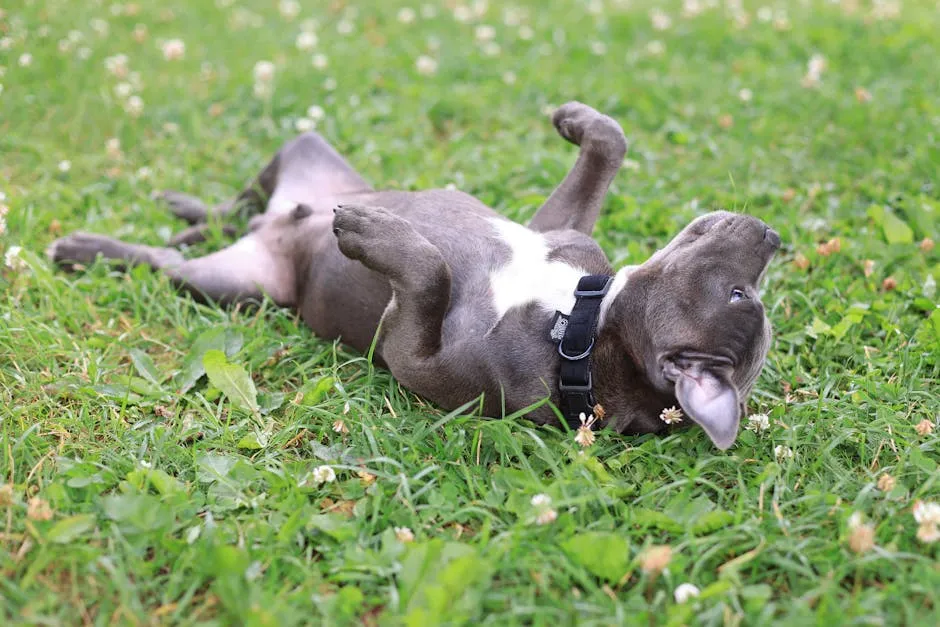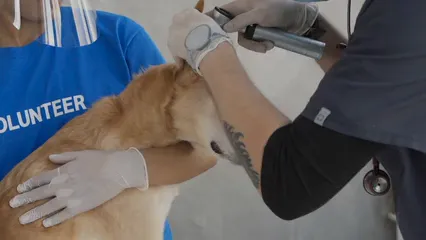
Why Does My Dog Sit on Me? Understanding This Common Behavior
Why Does My Dog Sit on Me? Understanding This Common Behavior
Introduction
Have you ever asked yourself, “Why does my dog sit on me?” This behavior often puzzles many dog owners. It can feel both endearing and confusing. In this article, we’ll explore the various reasons why dogs choose to sit on their humans. Understanding this can enhance your bond with your furry friend.
And speaking of enhancing bonds, have you considered getting your pup a comfy dog bed? It might just be the perfect way for them to feel secure and cozy, encouraging them to snuggle up without invading your personal space!
Summary and Overview
Understanding why dogs sit on their owners is essential for pet parents. This behavior can stem from emotional needs, affection, or even comfort. Dogs often seek closeness to feel secure and loved. In fact, a study found that about 70% of dog owners report their pets sitting on them regularly.
This article will cover several key points: the emotional and physical reasons behind this behavior, the importance of canine communication, and how these factors contribute to your relationship with your dog. By recognizing these motivations, you’ll be better equipped to nurture your bond and address any concerns.

The Reasons Behind Sitting Behavior
Affection and Bonding
Dogs are naturally affectionate creatures. When they sit on you, it’s often their way of showing love. Physical touch plays a significant role in dog behavior. Dogs feel secure through proximity, especially when they cuddle close to their owners.
This behavior reflects their pack mentality. In the wild, dogs rely on their pack for safety and comfort. Studies indicate that dogs who experience physical bonding show higher levels of emotional attachment. So, when your dog chooses to sit on you, they’re expressing their affection and trust. It’s a sign that they see you as a vital part of their social circle, enhancing your emotional connection.
Seeking Comfort and Security
Dogs often sit on their owners to find comfort and security. This behavior is especially common during stressful situations. For instance, think about a thunderstorm. Your dog might jump into your lap, looking for reassurance. They seek your presence as a source of emotional support.
This instinct connects back to their puppy days. Puppies often cling to their mothers when feeling scared. As adults, they still remember these feelings. Your dog sees you as a protector. By sitting on you, they feel safer and more relaxed. This behavior is their way of coping with anxiety and uncertainty.
If you notice your dog sitting on you more during anxious moments, it’s a sign they trust you. Understanding this can deepen your bond. To help soothe their worries, consider giving them canine anxiety relief chews to help them feel more at ease.
Temperature Regulation
Dogs may also sit on you to manage their body temperature. Your body heat is inviting, especially on chilly days. When it’s cold, your dog might snuggle up to soak in warmth. This simple act provides them comfort and security.
Conversely, in warmer weather, dogs might seek cooler surfaces. If they feel too hot, they may choose to sit on your lap for a moment, then move to a cooler spot. This behavior helps them regulate their body temperature effectively.
It’s fascinating how dogs instinctively know where to go for comfort. By sitting on you, they find a cozy spot while also keeping an eye on you. To ensure they have a cool place to chill, consider getting them a dog cooling mat for those hot summer days!

Territorial Behavior
Another reason your dog sits on you relates to territorial behavior. Dogs naturally have a strong instinct to mark their territory. Sitting on you can be a way for them to claim you as their own. This scent-marking behavior signals to others that you belong to them.
When your dog sits on you, they are not just being affectionate. They may also be demonstrating protective instincts. This behavior can intensify when new pets visit or when they feel threatened. Dogs often want to guard their resources, including you, from potential threats.
Understanding this behavior can help you better manage interactions with other pets. It’s essential to recognize the balance between affection and instinctual protection. A strong dog leash can also help you maintain control during these interactions.
Dominance Assertion
Sometimes, dogs sit on their owners to claim dominance. It’s crucial to differentiate between dominance and affection. If your dog displays aggressive behavior, such as growling or snapping, while sitting on you, it may signal an attempt to assert control. This is more common in multi-pet households, where competition for attention arises.
Training is vital to establish boundaries. Ensure your dog understands commands and acceptable behaviors. Consistent training can help manage this tendency. Reinforce positive behavior and discourage aggression. Remember, a well-trained dog is a happy dog, and a clear hierarchy benefits everyone in the household. To aid in training, a dog training clicker can be a great tool!

Playfulness and Attention Seeking
Dogs often sit on their owners to spark playtime or gain attention. You might notice playful behaviors when your dog jumps into your lap. Signs of this include wiggling, nuzzling, or bringing toys. These actions indicate they want to engage in fun activities.
Encouraging play can enhance your bond. Use positive reinforcement to reward your dog when they initiate play. This approach encourages them to seek interaction in a desired manner. A playful dog is a happy dog, and together, you can create wonderful memories. To keep the fun going, consider getting some interactive dog toys to stimulate their minds!

Potential Concerns
Is This Behavior a Cause for Concern?
While most dogs sit on their owners out of affection, changes in this behavior can indicate underlying issues. If your dog suddenly becomes clingy, it might signal anxiety or health problems. Watch for signs like excessive panting, lethargy, or changes in eating habits.
If you notice these symptoms, a veterinary consultation is essential. Your vet can help identify any health concerns or anxiety issues. Keeping an eye on your dog’s behavior patterns can provide insight into their emotional and physical well-being. Addressing these changes early can lead to better outcomes for your furry friend. You might also want to have a dog first aid kit on hand just in case!

Addressing Unwanted Sitting
If your dog’s sitting behavior becomes an issue, don’t worry! You can manage it effectively. Start by redirecting their actions through training. Teach them to sit on a designated mat or a comfy dog bed. This gives them a cozy spot without invading your space.
Consistency is crucial in this process. Always use the same command or cue when you want them to move. Reward them with treats or praise when they follow your commands. Positive reinforcement encourages good habits. If you’re looking for great rewards, consider some delicious dog treats to keep their motivation high!
You can also create boundaries. If your dog jumps on you, stand up and walk away. This shows them that sitting on you won’t always get the attention they desire. With patience and practice, your dog will learn where it’s appropriate to sit, keeping everyone happy.

Conclusion
In summary, dogs sit on their owners for many reasons, like expressing affection and seeking comfort. Understanding this behavior helps strengthen your bond. Recognizing how dogs communicate allows you to nurture your relationship. Embrace this behavior as a heartwarming reminder of your connection. After all, your dog’s love is unconditional, and their closeness is a testament to their trust in you. If you want to keep your dog clean and fresh, don’t forget to check out dog shampoo to pamper them!
If you’re curious about the reasons behind your dog’s behavior, check out our article on why does my dog sit on me.
Frequently Asked Questions (FAQs)
Is it normal for my dog to sit on me all the time?
Yes, it’s common for dogs to sit on their owners frequently. This behavior usually stems from affection and a desire for closeness. However, if your dog sits on you excessively, it may indicate anxiety or insecurity. Monitor their behavior and ensure it doesn’t disrupt your daily life. If it becomes problematic, consider training and redirection strategies.
How can I stop my dog from sitting on me when I don’t want them to?
If you want to discourage this behavior, use consistent training techniques. Start by teaching your dog to sit on a designated spot, like a mat or dog bed. Reward them when they follow your command. You can also redirect their attention by engaging them in play or providing treats when they choose not to sit on you. Consistency is key to helping your dog understand your preferences.
Can sitting on me be a sign of dominance?
Sitting on you can sometimes indicate dominance, especially if your dog displays aggressive behavior towards others while doing so. However, it’s essential to differentiate between dominance and affection. Most often, dogs sit on their owners for comfort and love. Watch for other signs, like growling or snapping, to assess whether the behavior is protective or simply affectionate.
When should I be concerned about my dog sitting on me?
If your dog suddenly becomes overly clingy or starts sitting on you excessively, it might signal anxiety or distress. Look for other signs, such as excessive panting, whining, or changes in appetite. These could indicate underlying health issues or emotional problems. If you notice these symptoms, consulting a veterinarian or a dog behavior specialist is advisable.
How can I maintain a strong bond with my dog if they don’t sit on me often?
Bonding with your dog doesn’t solely rely on physical closeness. Engage in activities that foster connection, like daily walks, playtime, or training sessions. Spend quality time together through grooming or puzzle toys that challenge their mind. This approach helps strengthen your relationship, ensuring your dog feels loved and secure, even if they don’t sit on you often.
Please let us know what you think about our content by leaving a comment down below!
Thank you for reading till here 🙂
All images from Pexels




